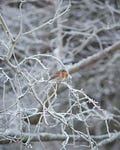Hello everyone and welcome to a very festive edition of The Seasonal Supplement.
December already! And here in the hills of rural Somerset, it is finally cold. Frosts, sparkling dewdrops, and flurries of snow decorate the countryside landscape, and heavy fog clouds the air, turning the trees to silhouettes. There’s nothing to plant. Nothing to preserve. …


